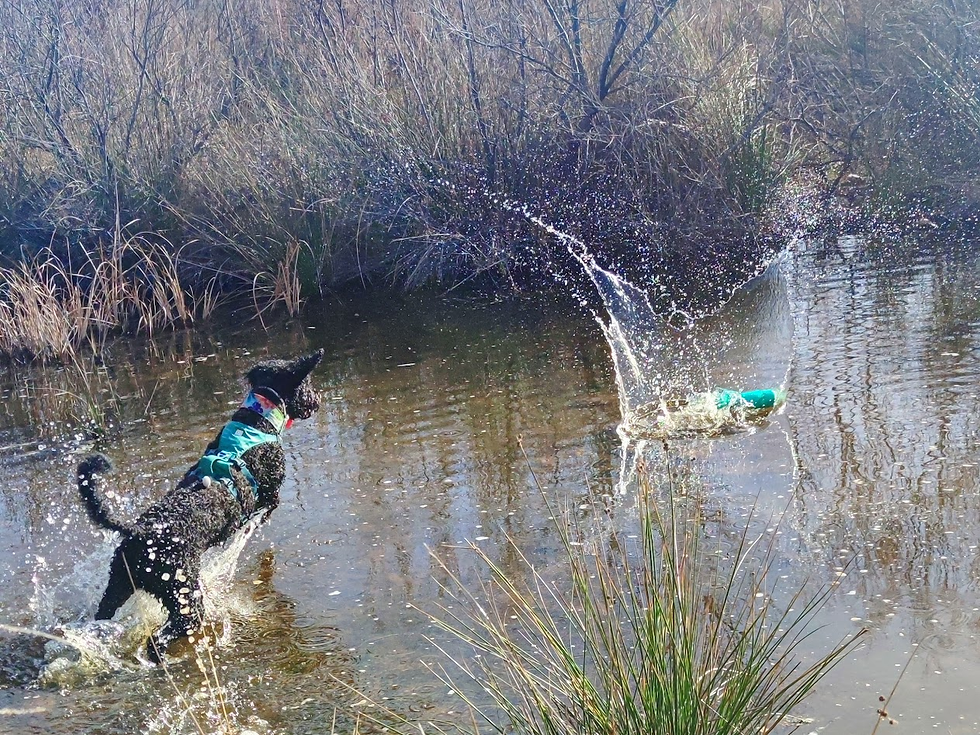Saying Goodbye: Euthanasia as a Final Act of Love
- Louise Feaheny

- Feb 19
- 6 min read
One of the most difficult decisions any pet owner will ever face is knowing when it is time to say goodbye. Euthanasia is an act of love and kindness, a final gift we can give our little loved ones when their quality of life has deteriorated beyond repair. Understanding the process and knowing what to expect can help ease the burden of this heart-breaking decision.

The Process of Euthanasia
Euthanasia is a process performed by a vet to allow an animal to pass without pain or distress. Typically, the procedure follows these steps:
Sedation: Many veterinarians administer a sedative first, allowing the pet to relax and become drowsy. This helps ensure a calm and stress-free transition.
Euthanasia Injection: The primary euthanasia drug is usually an overdose of pentobarbital, a barbiturate that quickly induces unconsciousness and stops the heart within seconds to minutes. The pet does not feel pain; rather, they simply drift into a deep sleep before passing away.
Final Moments: During the procedure, the animal may release their bladder or bowels, or take a few deep reflexive breaths. These are normal physiological responses and do not indicate suffering.
Aftercare: Many veterinary clinics offer cremation or burial services, and some pet owners choose to take their pets home for a private burial in a pet cemetery.
At-Home Euthanasia vs. In-Clinic Euthanasia
One decision to consider is whether to opt for at-home euthanasia or to take your pet to the clinic. At-home euthanasia can provide a peaceful passing in a familiar, stress-free environment, which may be ideal for pets who are anxious or fearful of the vet. Some vets offer this service, while others may refer you to specialists who focus solely on at-home euthanasia.
For my boys, Garfield and Obi, I chose to take them to the clinic. They were both comfortable with car rides, and had built a strong bond with our trusted vet. They weren't stressed at the clinic, and I knew they would be comfortable in that environment. However, for my dogs, I would likely choose at-home euthanasia.
It’s important to discuss your options with your vet and decide what is best for your pet’s individual needs. If your regular vet does not offer at-home euthanasia but you feel it would be the best choice, there are dedicated services that specialise in this.
When is the Right Time? The Quality-of-Life Scale
Determining when to let go is often the hardest part. Many veterinarians use a Quality-of-Life Scale to help guide pet owners through the decision. This scale, developed by Dr. Alice Villalobos, assigns a score (0–10) to different aspects of a pet’s well-being. A score of 35 or higher suggests that the pet still has a good quality of life, while a lower score may indicate it’s time to consider euthanasia.
Quality-of-Life Scale:
Category | Score (0–10) | Description |
Hurt | 0–10 | Is pain managed adequately? Can it be controlled with medication or therapies? |
Hunger | 0–10 | Is the pet eating enough? Can nutrition be maintained through appetite stimulants or assisted feeding? |
Hydration | 0–10 | Is the pet drinking enough? Can hydration be managed through subcutaneous fluids if needed? |
Hygiene | 0–10 | Can the pet stay clean? If incontinent, are they being kept dry and comfortable? |
Happiness | 0–10 | Does the pet still enjoy their favourite activities, interact with family, or show interest in surroundings? |
Mobility | 0–10 | Can the pet move on their own? Do they need assistance, and if so, is it manageable? |
More Good Days Than Bad | 0–10 | Are there more good days than bad days? When bad days outnumber the good, it may be time to say goodbye. |
If the total score is below 35, it may indicate that the pet’s quality of life is compromised and that euthanasia should be considered. However, this is subjective and can vary from animal to animal, and also from person to person when allocating the scores.
Another useful tool is the Five Favourite Things approach. Write down your pet’s five favourite activities—things they love to do most. If they can no longer fully enjoy at least three of them, it may be an indication that their quality of life is declining beyond what is fair to them.
Planning Ahead: What to Consider Before the Appointment
Making decisions about aftercare while you’re grieving can be overwhelming, so it’s best to plan ahead. Consider the following:
Burial or Cremation: Do you want to take your pet home for a private burial, or would you prefer cremation? Many veterinary clinics work with pet crematoriums to offer options.
Individual vs. Group Cremation: With individual cremation, your pet is cremated separately, and you receive their ashes. Group cremation is a more affordable option, but ashes are not returned to owners.
Cost Considerations: Ask your vet about the cost of euthanasia and aftercare beforehand. Knowing the fees in advance allows you to handle payment before or after the appointment, avoiding distress in the moment.
Support and Transport: How will you get home? Will you be emotionally okay to drive? Do you want someone with you for support? Having a trusted friend or family member there can help.
Keepsakes and Memories: If you’d like a physical reminder of your pet, consider taking a lock of their fur, or asking your vet to make a paw print using an ink pad or clay. Some veterinary clinics provide these keepsakes as part of their services, so ask in advance if this is something you’d like.
Making these decisions in advance allows you to focus entirely on your pet in their final moments without added stress.

My Personal Experience: Garfield and Obi
Recently, I had to make this decision twice in a short period—for both of my boys, Garfield and Obi-Wan Catnobi.
Garfield, at 14 years old, had kidney failure. Though he remained his usual happy self until his final day, his body had given up. He could no longer eat, had lost significant weight, and had become confused and unsettled. The night before, he desperately tried to find water in places he had never looked before—fish tanks, the toilet—despite having fresh water available in multiple bowls and a water fountain. That morning, while we were sitting in the garden together, our wonderful vet called to offer an earlier appointment, but I said no. I wanted Garfield to enjoy one last moment basking in the sun, letting the warmth drench his golden belly. We had exhausted all options, and it was time.

Obi was only 10, and we had only known him for four short months. Before we adopted him, we specifically asked his previous family to check his mouth, as we had experience with dental issues with Garfield. We were reassured that his mouth was fine, that he had "just a little plaque" that could be easily cleaned. We fell for the lie, and when Obi arrived, it was clear something was very wrong. From the start, he was underweight, drooling, his coat was in an awful condition, his breath smelled awful, and most of his teeth were rotten. Multiple surgeries, months of antibiotics and anti-inflammatories, and a biopsy later, we learned the painful truth—an aggressive carcinoma was destroying his face. He rarely showed pain, always cuddly and affectionate, but the suffering was undeniable. We made the heart-breaking decision to let him go.
Both of my boys fell asleep in my arms, purring as I kissed their heads for the last time. It was the kindest thing I could do for them. I found it hard to believe the weight of an empty pet-carrier as I walked back to the car.

Final Thoughts
Euthanasia is never an easy choice, but it is a final act of love. If you are facing this decision, take comfort in knowing that you are not alone. Speak with your vet, assess your pet’s quality of life, and trust that you are making the most compassionate decision.
Your pet has been your companion, your friend, and your family. They have given you unconditional love every day of their life. The least we can do is to make sure that, when the time comes, their final moments are filled with love, warmth, and peace. Thank you for putting them first, and for making the choice for them.
Please be kind on yourself, and allow yourself time and space to grieve. Losing a pet is akin to losing a person that we love, and you can feel pain for a long time afterwards. Allow yourself to feel, and please talk to someone if you are struggling to cope with your emotions.
I want to deeply thank my wonderful vets, Susana and Alba, for their unwavering support and for making this difficult process a little easier. They stood by me during some of the hardest moments, always showing kindness and understanding. A special thank you to Susana for fighting so hard for both of my boys and to Alba for coming in on maternity leave to be by my side as Garfi peacefully slipped away. I will forever be grateful to you both for everything you've done for us.







Comments